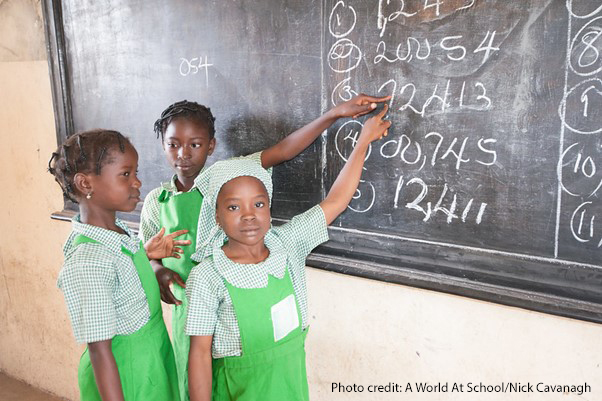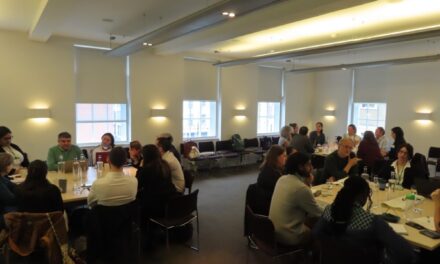This blog was written by Inyang Umoren, Teaching at the Right Level (TaRL) Africa, and originally published on the RISE Programme website on 15 December 2022.
In line with the RISE messaging campaign action of ‘Measure learning reliably, regularly, and relevantly’, we discuss one example of what such learning measurement looks like in the context of Teaching at the Right Level (TaRL) in Nigeria.
Many learners in Nigeria still complete primary education without gaining foundational skills in literacy and numeracy despite initiatives that have increased school enrolment. This need to shift focus to ensure universal learning as we gear toward realising the Sustainable Development Goals can only happen through improvements in education from the systems to the classroom level.
Measuring learning outcomes is essential to gauge where learners fall behind, inform decisions on interventions needed to support struggling learners to catch up, and track their progress.
Relevance of learning assessments
Learning assessments play an essential role in education reforms. At the national level, the government can use assessment data to inform policy, evaluate programs and interventions, and improve instruction. Sample-based learning assessments are evaluations of performance at the school, regional, or national level.
Most importantly, there is an increasing need for using formative assessments to guide teachers/instructors in order to help children learn at the classroom level. Formative assessments are also helpful for making quick changes in the teaching methodology at the classroom or individual level so that every child can achieve the necessary skills in the education system. In a typical classroom, there will be children at different learning levels; however, the teacher often cannot easily identify those levels, the individual learners’ needs, or how to provide remedial support.
The scenario in a classroom
The inequality in learning levels in the classroom is due to many reasons. A classroom is usually heterogeneous, to begin with.
Imagine a classroom in a remote village in Nigeria. The teacher, Mr. Ali, is responsible for 63 Grade 2 learners. On an ordinary day, Mr. Ali undertakes a 20 kilometres journey on his bicycle from his home to the school while his learners either walk or cycle from varying distances to the school.
One day, Mr. Ali arrives at the school at 9 am and then waits for the arrival of most of his learners. Some of them arrived before him. A few others will be absent because they have to join their parents at the farm to harvest potatoes that are in season. Finally, at 9:30 am, he has 30 children seated in the class, either chatting away with each other or sleeping with their heads on the desk (as they are already tired from trekking long distances to the school or hungry).
Mr. Ali makes introductory remarks in Hausa and then begins to write a short text on the blackboard in English. After ten minutes of writing, he turns around and says to the class in English: “Copy this text into your notebooks.” The children diligently copy the text into their notebooks, some out of dedication and others from the fear of being flogged. Amongst the children, even though they are all writing, some cannot recognise letters or distinct words in the text if asked to read independently.
At the end of the term, Mr. Ali conducts an exam with all the pupils and grades them based on percentages of correct responses—where most of them will fail. The guidance to Mr. Ali was clear—complete the curriculum and take exams. He didn’t know any other way.
Mr. Ali’s classroom may represent a collection of features of a dysfunctional classroom and the socio-economic influences on poor educational performance, but it also presents a story of educational failures that emerge in the absence of appropriate learning assessments. Among Mr. Ali’s pupils, a proportion is likely to complete the remaining primary school years without gaining foundational skills. Equally, the teachers in Grade 3 and onwards are unprepared to identify individual learning needs or provide remediation opportunities.
How Teaching at the Right Level (TaRL) overcomes shortcomings in the existing assessment system
In Nigeria, learning assessments in schools include a collection of tests that comprise a continuous assessment pack and termly examinations. The aims of the tests, considered as formative assessments, include evaluating learners’ progress towards completion of the curriculum and providing feedback to pupils on their skills and progression.
In practice, Mr. Ali and many primary school teachers in Nigeria face challenges in using continuous assessment tests and examination results to appropriately identify children’s learning levels within the class. At the least, these assessments categorise learners as top, average, and low performers.
Additional learning assessments are required to provide opportunities for visibility of the state of the problem and the children’s educational needs while also pointing out proactive methods for remediation.
The assessments in TaRL are designed to assess foundational reading and mathematics skills. TaRL utilises a modified version of the tool used in Annual Status of Education Report (ASER), a citizen-led survey in India, to assess children’s learning levels, improve instruction, plan monitoring and mentoring activities, and guide advocacy. The reading assessment tool assesses:
- letter, sound, or syllable recognition (dependent on the reading language assessed);
- word reading;
- paragraph reading (typically a Grade 1 level text); and
- story level (typically a Grade 2 level text) text reading.
The skills assessed by the mathematics tool include:
- number recognition, and
- basic operations like addition, subtraction, multiplication, and division.
At the classroom level, the TaRL assessment makes the learning needs visible. The assessment is administered by teachers and adopts a one-on-one oral approach, which allows for a direct connection between the teacher and the learning needs of each child. The assessment administration and data recording are simple and help teachers identify the child’s highest learning level. Parents and caregivers are also more likely to understand these levels than a general percentage score in an exam.
Actionable use of the assessment data is essential to ensure that children make progress. An immediate use of the assessment results is the creation of homogenous learning groups and setting goals. Grouping children by learning levels allows teachers to focus on building relevant foundational skills. Given a range of learning content and materials, teachers develop plans that adopt appropriate classroom activities that improve learning outcomes. The assessments are conducted regularly to track learners’ progress against learning goals and regroup based on new learning levels reached during implementation.
Conclusion
There is an urgent need for teachers to measure learning regularly and use the assessment data to improve instruction. Improvements in learning outcomes largely depend on the teacher’s actions within the classroom- and the teacher’s ability to respond and teach each student at the level they are currently at. At the same time, while teachers’ use of the data is a necessary first step, other education stakeholders must also embed the practice of regularly generating and using learning data to inform policies and practices.
———————–
RISE blog posts and podcasts reflect the views of the authors and do not necessarily represent the views of the organisation or our funders.





